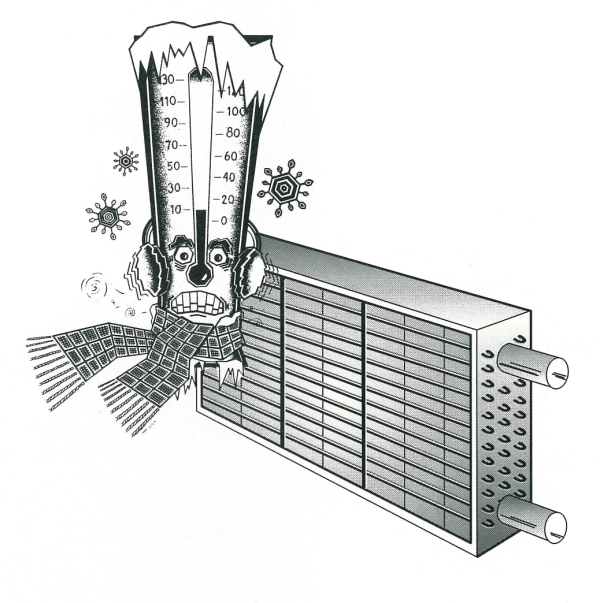Outside Air Temperature Is Below Freezing, Are Your Air Handler Coils Fully Protected?
 There are numerous ways to design a method to protect air handler coils from freezing. Whatever your particular system requires, there is always one common denominator:
There are numerous ways to design a method to protect air handler coils from freezing. Whatever your particular system requires, there is always one common denominator:
The outside air damper must close completely and reliably.
Here are a few simple steps to ensure that you’re using spring return actuators effectively for freeze protection, and that your outside air dampers close when you need them to.
Use the failsafe functionality of the actuator to close the damper.
Spring return and electronic fail-safe actuators are designed to close the damper during fail-safe conditions. Driving the actuator closed is not acceptable for freeze protection. The cause of the actuator closing may be a shorted wire to the signal input, a programming error or other event during which a drive signal cannot operate.
The freezestat (low ambient temperature limit) must be hard-wired to the actuator. Intermediate relays are acceptable, but all devices should allow the actuator to achieve its full fail-safe position.
Do not allow the control system to bypass the freezestat.
The freezestat plus actuator is a safety function that augments your control system. The control system alone cannot fully protect coils against extremely low outside air temperature entering the system. Wiring the freezestat to the software interlock control of fan shutdown and actuator spring return is not acceptable.
 Cut power, not control.
Cut power, not control.
In Belimo proportional actuators, wire #2 is 24 VAC/DC power, wire #3 is 2 to 10 V control signal input. The actuator’s fail safe function will only operate when power to the actuator is cut.
Verify damper position.
The freezestat could trip, giving the actuator a command to close, but freezing rain or other obstructions may block the damper. It is recommended to verify damper position with an auxiliary switch after the freezestat has tripped. Belimo actuators can either come with built-in or add-on auxiliary switches.
Test under real conditions.
The freezestat must be tripped and the sequence of operation as desired must occur. Cutting power to the actuator is not sufficient. The ideal test should be performed with low outside air temperature. The control signal should open the outside air damper then wait for the freezestat to initiate the freeze protection routine. In this way, the freezestat’s sensor location can also be properly determined.

